Southern Toad (Bufo [Anaxyrus] terrestris)

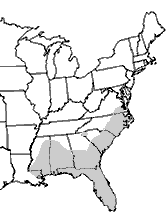
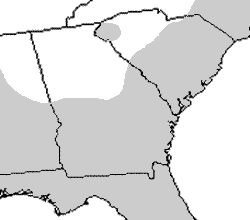
Photos by Amanda Hurst unless otherwise noted
Southern Toad’s Call
Description: The average body length of southern toads is 41-75 mm (1.6-2.9 in), although some individuals found on isolated island populations can reach 113 mm (4.4 in). Males are smaller than females, and typically have a darker throat during the breeding season. General coloration is usually brown but can vary to dark gray, blackish, or even brick red. Several dark spots or blotches are frequently present on the back and upper sides, each surrounding one or more warts. A light line extends partway down the middorsal of some southern toads, although it may be obscure or absent in others. The belly is grayish white, while the chest is spotted. The skin of these toads is dry and warty, and they have an elongated, enlarged parotoid gland behind each eye. High cranial crests extend from pronounced knobs and approach each other toward the snout. The distinctive knobs project upward in front of the parotoid glands, often giving the animal a horned appearance.
Range and Habitat: Southern toads can be found in every southeastern state except Tennessee. They occur for the most part below the Fall Line, their range extending from southeastern Virginia to Florida and eastern Louisiana. There is also an isolated colony in northwestern South Carolina. When not breeding, this species resides in a wide variety of terrestrial habitats, particularly those associated with sandy soils that facilitate burrowing. These include agricultural fields, coastal scrub, pine woodlands, hardwood hammocks, and residential areas, all of which must be near water. During the breeding season, these toads use a broad spectrum of aquatic environments.
Habits: Breeding generally takes place from February to October, depending on location and weather conditions. Most reproductive activity occurs in early to late spring. Warm, rainy weather triggers these toads to make the transition from upland terrestrial habitats to breeding grounds. Adults may also call on warm nights with heavy rain outside of the breeding season. Shallow, standing water is a prerequisite for a potential breeding site. Southern toads will indiscriminately congregate in wetlands, ponds, flooded low areas in both wood and field, or even in water-filled ditches and tire ruts to breed. The chorusing of large aggregations can be deafening. Females typically lay 2500-4000 eggs in long, coiled, gelatinous strands. Eggs hatch in only 2-4 days and tadpoles undergo metamorphosis after 30-55 days, when they are less than half an inch long. Great numbers of newly metamorphosed toadlets can often be found near their natal wetlands. After reaching sexual maturity at about 2-3 years, individuals presumably continue to breed every year. The lifespan is at least 10 years. In the northern part of their range, southern toads are inactive during the late fall and winter, while in most of Florida they remain active year-round. The highest level of activity occurs from dusk to dawn; they usually seek cover under forest litter or dig into loose soil during the day. Burrowing is accomplished with the use of keratinized, spadelike protuberances found on the back of each hind foot. Between feeding, hibernation, and breeding, southern toads maintain an extensive range of up to one square mile. They will eat just about anything they can catch with their sticky tongue and swallow, including beetles, earwigs, ants, cockroaches, crickets, snails, bees, and lightning bugs. Tadpoles consume aquatic vegetation and algae that they scrape from leaves, and will occasionally eat carrion as well. Snakes, especially hognose snakes, watersnakes, indigo snakes, garter snakes, eastern ribbon snakes, and black racers, are the primary predators of southern toads. Giant water bugs and turtles have also been reported to prey upon this species. Two-toed amphiumas, lesser sirens, and aquatic insects such as dragonfly larvae will kill and eat tadpoles. Southern toads rely on concealment beneath logs, ground litter, or substrate as their primary defense, but are also safeguarded by toxic skin secretions produced by the parotoid glands. Eggs and tadpoles are also foul tasting to many aquatic predators. When threatened, these toads will inflate their lungs and stretch out their hind legs in order to appear too large to swallow.
Call: The voice is a shrill, musical trill nearly an octave higher than the call of the American toad. The call lasts from about 2 to 8 seconds, with approximately 75 trills per second.
Conservation: Southern toads are not protected in any part of their geographic range. They are common and appear to do well in suburban and agricultural areas. Cane toads, an introduced species in parts of Florida, may compete with or even prey upon their smaller cousins, as there has been a decrease in southern toad populations in these areas.
Pertinent References:
Conant, Roger, and Joseph T. Collins. A Field Guide to Reptiles & Amphibians: Eastern and Central North America. 3rd ed. Boston: Houghton Mifflin, 1998.
Dorcas, Mike, and Whit Gibbons. Frogs and Toads of the Southeast. Athens: University of Georgia, 2008.
Jensen, John B., Carlos D. Camp, Whit Gibbons, and Matt J. Elliott. Amphibians and Reptiles of Georgia. Athens: University of Georgia, 2008.
Account Author: Lindsay Partymiller
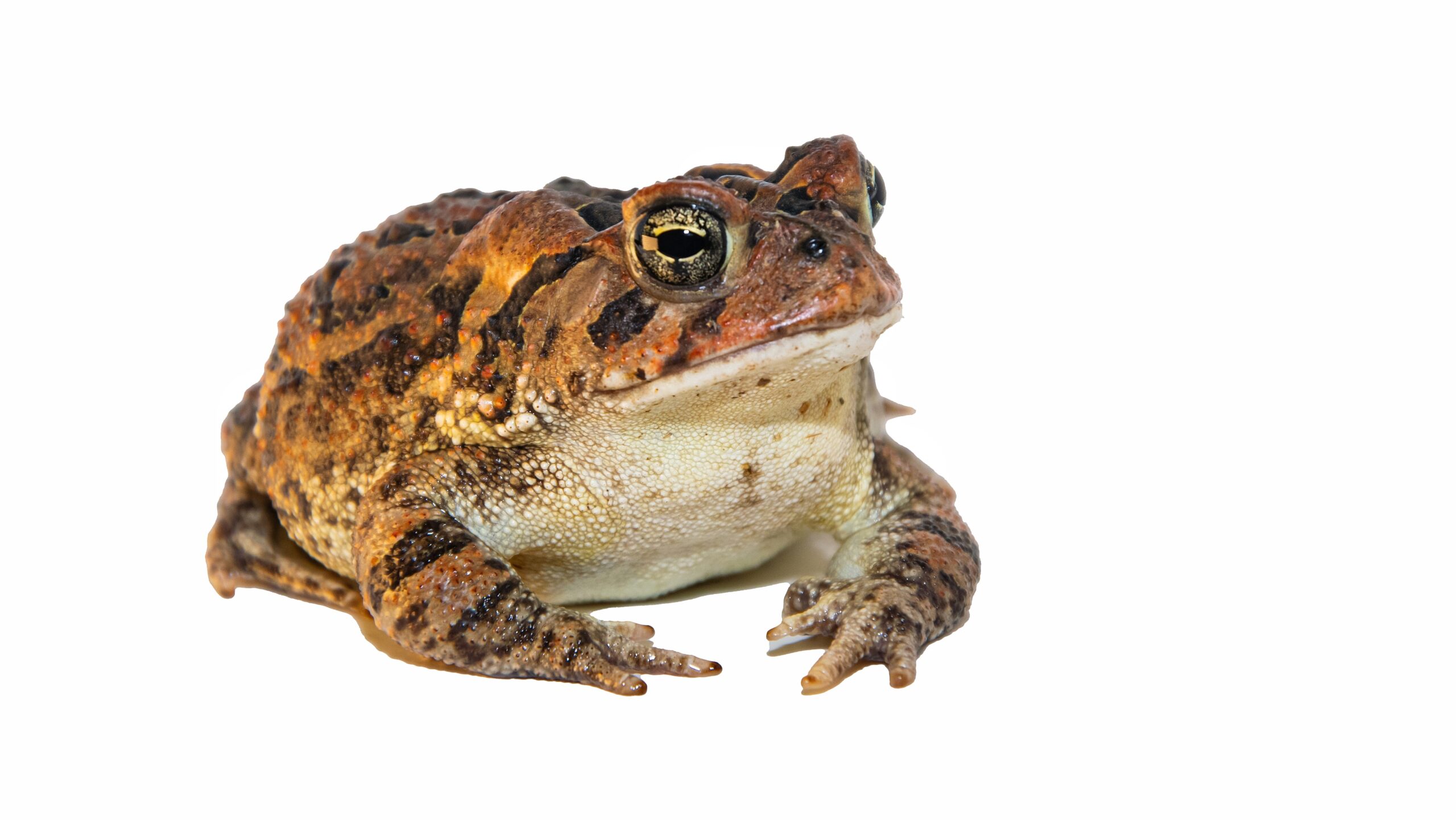
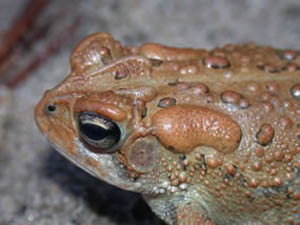
Cranial crests on a southern toad (Photo by J.D. Wilson).
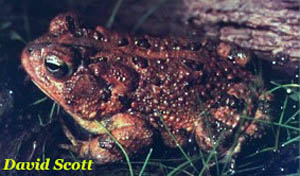
(Photo by David Scott)
